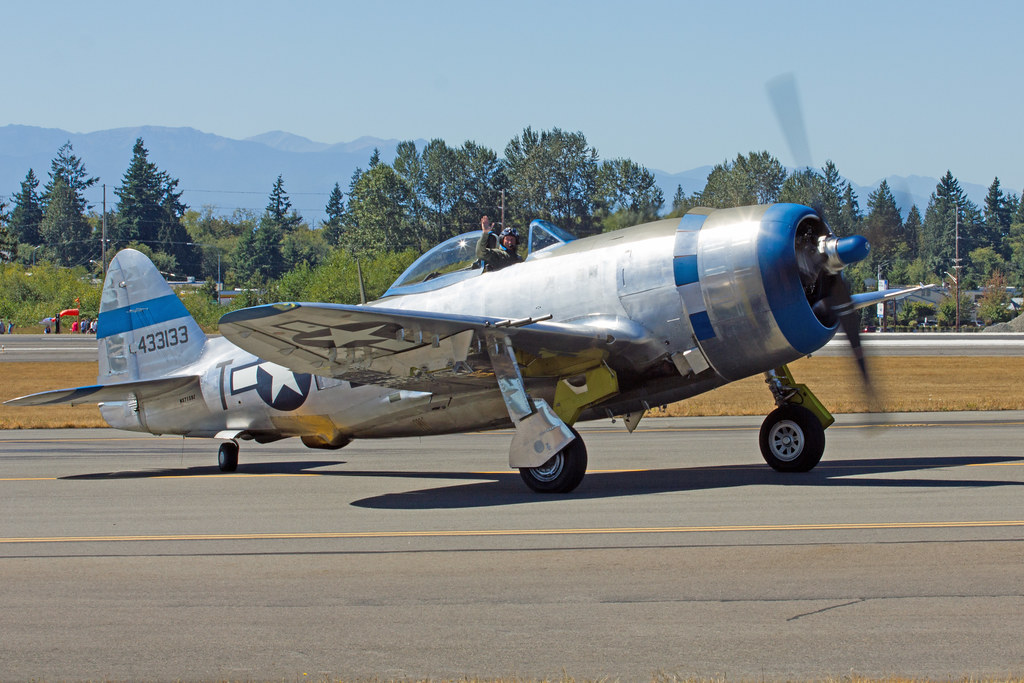
From its first combat deployment in April 1943, the P-47 Thunderbolt was a revelation, an aircraft that forged its reputation in the crucible of World War II’s aerial conflicts. Adored by American pilots for its robust construction, formidable firepower with eight .50 caliber machine guns, and substantial bomb-carrying capabilities, the “Jug,” as it was affectionately nicknamed, dominated the skies in every theater it graced.

The P-47 was designed by Alexander Kartveli and manufactured by Republic Aviation. Entering service in 1942, it quickly became the best-armed aircraft of the war, a title it retained throughout the conflict. Its ability to deliver a payload equivalent to half that of a B-17 Flying Fortress made it an unmatched fighter-bomber of its time. With over 15,600 Thunderbolts produced between 1941 and 1945, it was a mainstay of the US Army Air Forces (USAAF) and served with distinction in the hands of pilots from the British RAF, French Free Forces, and even the Soviet Union.

The P-47 made a significant impact in Europe, where pilots from the USAAF’s 78th Fighter Group, based at Duxford Station 357, wielded its power with lethal precision. By the end of hostilities in 1945, the Jug was responsible for the destruction of over 7,000 enemy aircraft. Its Pratt & Whitney R-2800 air-cooled radial engine was robust, delivering 2,000 horsepower, and without the vulnerability of a water-cooled system, it could sustain incredible damage and still return its pilot safely home.

Mike Titre, a seasoned P-47 pilot, recalled the first time he fired all eight guns in combat, noting the significant recoil that could slow the aircraft by 35 miles per hour. Despite its firepower, the P-47 was also a sizable machine, dwarfing contemporaries like the Spitfire. This size translated into an impressive payload capability, with the Thunderbolt able to carry over two and a half hundred kilos of bombs under its wings and centerline.

During D-Day, the P-47’s strength as a ground support aircraft was on full display. Providing critical close air support, it bolstered the morale of Allied troops and terrorized enemy positions. By late 1944, the P-47 had firmly established itself as a premier fighter-bomber, supporting ground operations with deadly efficiency.
related images you might be interested.











